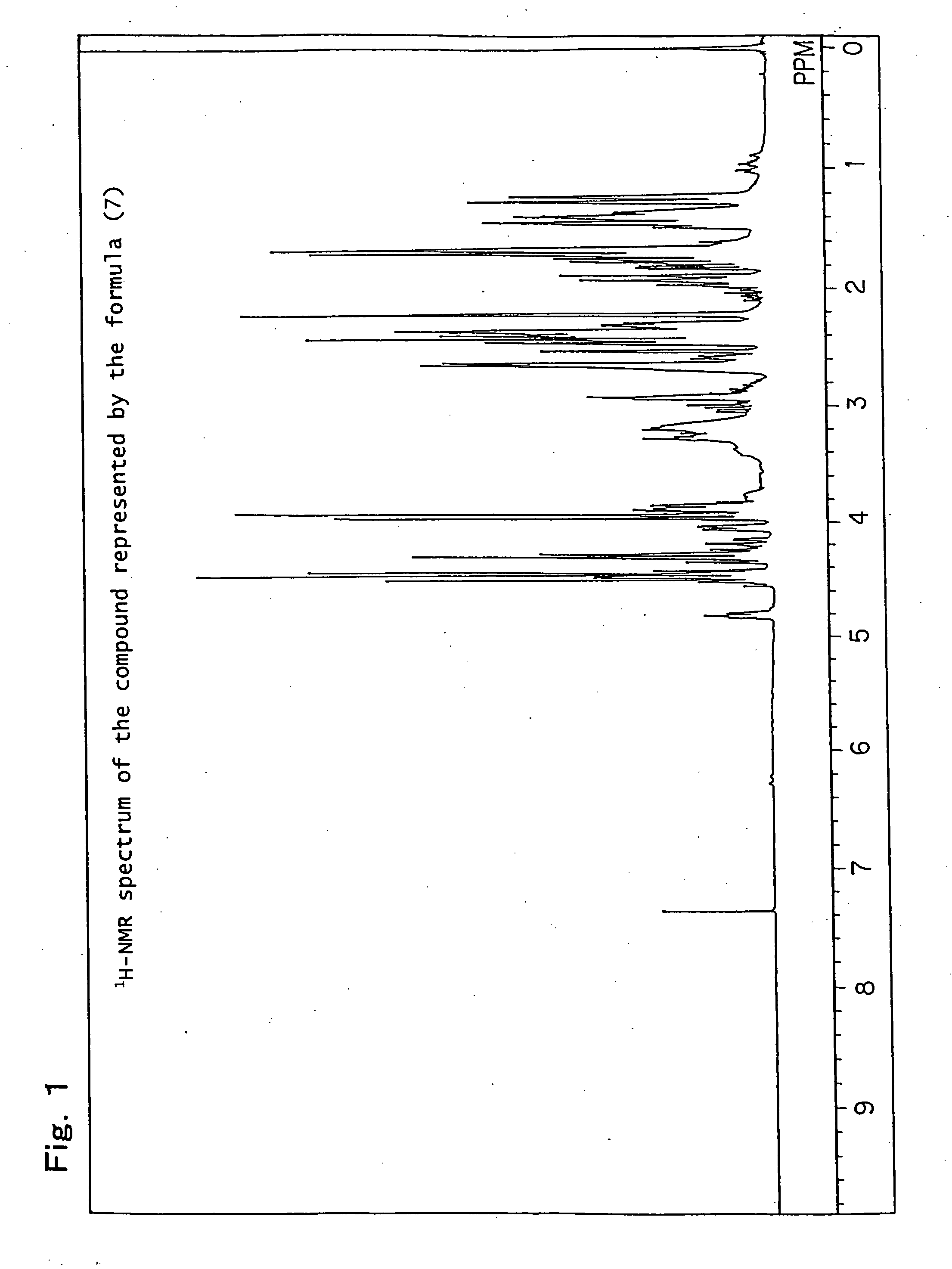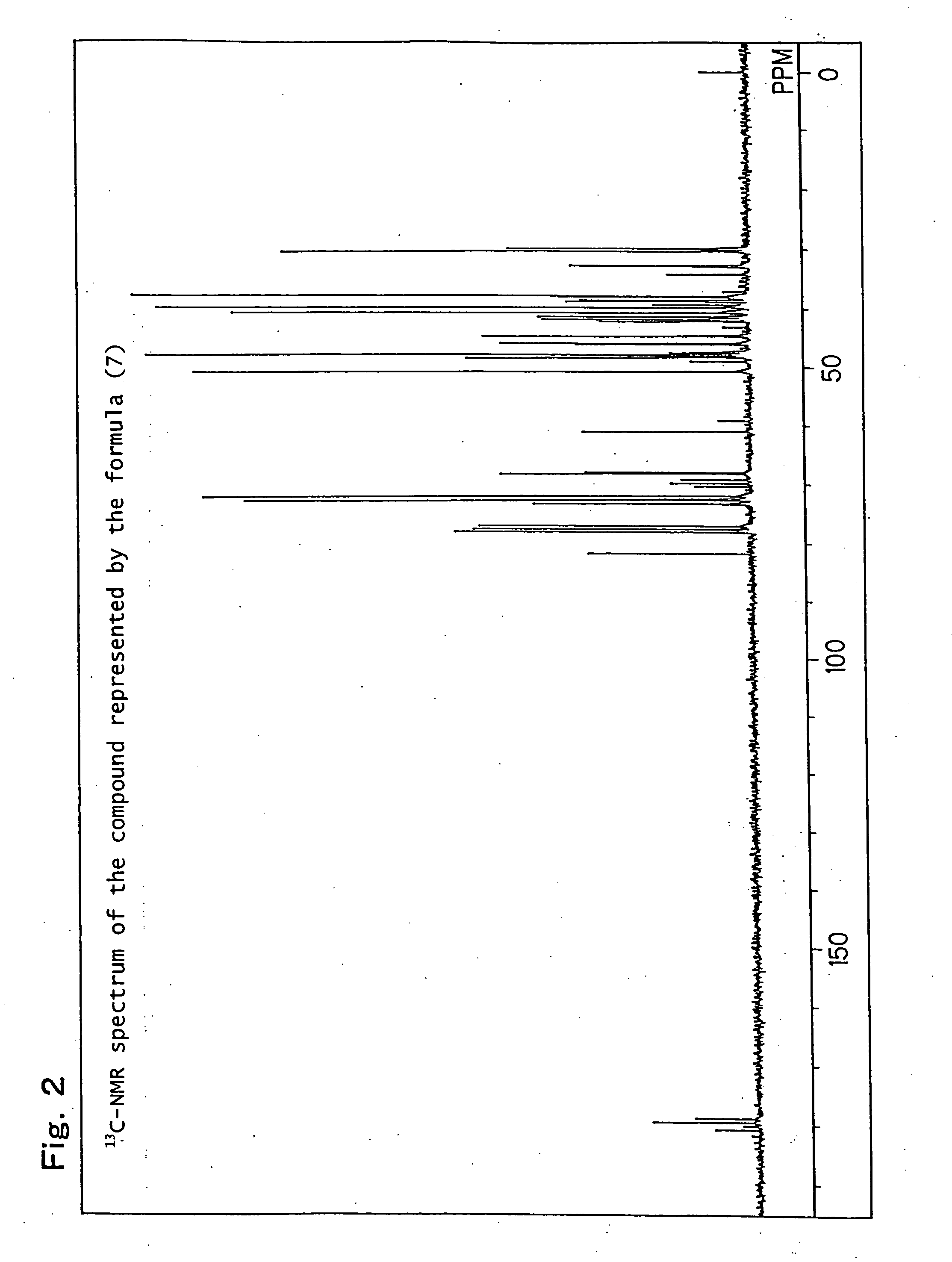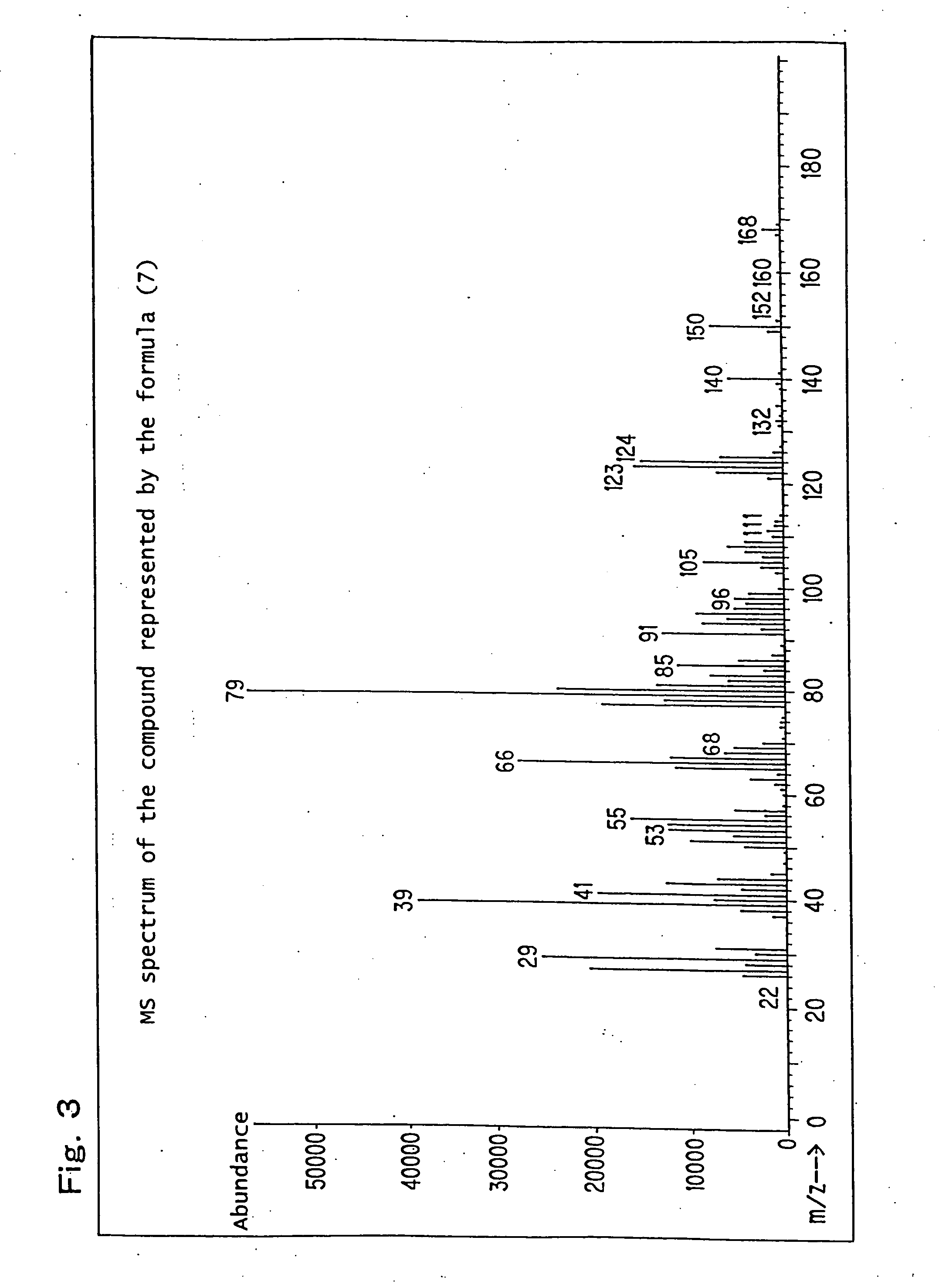(Meth)acrylate, raw material alcohol for the (meth)acrylate, method of producing the (meth)acrylate and the alcohol, polymer produced by polymerizing the (meth)acrylate, chemically amplified resist composition, and method of the formation of a pattern
a technology of (meth)acrylate and raw material alcohol, which is applied in the field of (meth)acrylate, can solve the problems of inferior stability, difficult to produce (co)polymers, and high hydrophobicity of polymers obtained by these methods, and achieves moderate polarity and solubility, high yield, and excellent heat resistance.
- Summary
- Abstract
- Description
- Claims
- Application Information
AI Technical Summary
Benefits of technology
Problems solved by technology
Method used
Image
Examples
examples
[0228] The present invention will be explained in detail by the following examples. However, the examples are not intended to limit the scope of the invention. The term “%” is herein used to mean “% by weight”, and the term “part” is herein used to mean “part by weight”, unless otherwise specified.
[0229] The measurement of properties of the produced copolymer was carried out by the following methods.
[0230] The weight-average molecular weight of the copolymer was determined by gel permeation chromatography (hereinafter referred to as GPC) relative to standard poly(methyl)methacrylate. Chloroform or tetrahydrofuran was used as a solvent.
[0231] The average copolymer composition of copolymers was determined by 1H-NMR measurement. Chloroform-d1 or acetone-d6 was used as a solvent.
example a1
[0232] Production example of a mixture (hereinafter referred to as the compound of formula (7)) of 8-hydroxy-4-oxatricyclo[5.2.1.02,6]decane-3-one and 9-hydroxy-4-oxatricyclo[5.2.1.02,6]decane-3-one, which is represented by the following formula (7):
[0233] 82.1 g (0.5 mol) of a white solid 5-norbornene-2,3-dicarboxylic anhydride (Wako Pure Chemical Industries, Ltd.) was dissolved in 600 ml of N,N-dimethylacetamide, the obtained solution was placed in a flask equipped with an agitator and a thermometer, and it was cooled to 0° C. to 10° C. in an ice water bath. While paying attention so that the temperature did not rise to 40° C. or higher, 21.0 g (0.5 mol) of sodium boron hydride was added thereto drop by drop followed by stirring for 12 hours. After completion of the stirring, while paying attention to the heat of neutralization and foaming, 6N hydrochloric acid was added thereto so that the solution became pH 2, and it was then left for 6 hours. Thereafter, the reaction solution...
example a2
[0237] Production example of a mixture (hereinafter referred to as the compound of formula (8) or OTDMA) of 8-methacryloyloxy-4-oxatricyclo[5.2.1.02,6]decane-3-one and 9-methacryloyloxy-4-oxatricyclo[5.2.1.02,6]decane-3-one, which is represented by the following formula (8):
[0238] 16.8 g (0.10 mol) of the compound of formula (7) produced in Example A1 and 80 ml of dry dichloromethane were placed in a flask equipped with an agitator, two dropping funnels, a thermometer and a condenser. 13.2 g (0.13 mol) of triethylamine was placed in one dropping funnel, and 12.5 g (0.12 mol) of methacryloyl chloride was placed in the other dropping funnel. The inside of the flask was substituted by nitrogen, and the system was set at about −5° C. While stirring the inside of the flask, triethylamine and methacryloyl chloride were dropped thereto over 1 hour, so that the amount of triethylamine was slightly excessive to that of methacryloyl chloride. This time, a little heat-generation was observed...
PUM
| Property | Measurement | Unit |
|---|---|---|
| Percent by mass | aaaaa | aaaaa |
| Percent by mass | aaaaa | aaaaa |
| Wavelength | aaaaa | aaaaa |
Abstract
Description
Claims
Application Information
 Login to View More
Login to View More - R&D
- Intellectual Property
- Life Sciences
- Materials
- Tech Scout
- Unparalleled Data Quality
- Higher Quality Content
- 60% Fewer Hallucinations
Browse by: Latest US Patents, China's latest patents, Technical Efficacy Thesaurus, Application Domain, Technology Topic, Popular Technical Reports.
© 2025 PatSnap. All rights reserved.Legal|Privacy policy|Modern Slavery Act Transparency Statement|Sitemap|About US| Contact US: help@patsnap.com



